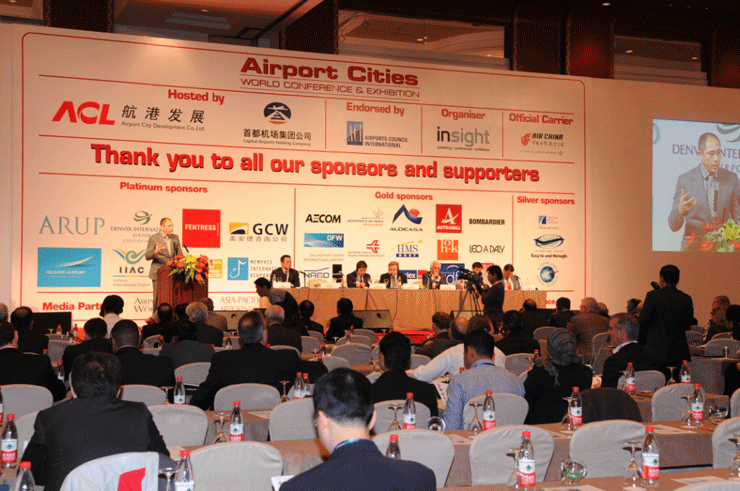ACE 2010 In Beijing

From April 21-23 the 10th
Airport Cities World Conference and Exhibition (ACE 2010) was held at
the China World Hotel in Beijing. It was the first time that this event
was hosted in mainland China.
Hosted by Beijing’s Airport City
Development (ACL), ACE 2010 attracted over 500 professionals and executives
from around 50 different countries, all employed in the airport-based
industry, including those from airports, aviation companies and related
sectors.
Desmond Shum, Vice Chairman and CEO of
ACL, delivered the opening speech on the first day of ACE 2010:
“The experience of other airport
cities throughout the world has show us that as a new city model, the
airport city plays a positive role in promoting passenger and cargo
traffic, boosting local economic growth and accelerating the upgrade
of industrial structure.
Driven by an airport-based economy and
the role as an international hub, Beijing Airport City has created a
development model with the theme of ‘double core drivers and comprehensive
growth.’
“With logistics and industrial parks
as core drivers of growth, the airport city, after completion, will
integrate airport processing, logistics, a free trade zone, international
trade, an industrial park, financial businesses, international exhibitions
and ecological residences to promote rapid development of areas surrounding
Beijing Capital International Airport, and eventually perhaps the whole
city as well.”
During the three-day event, ACL and the
organizing committee arranged a series of keynote speeches as well as
panel discussion on specific topics, of which Air Cargo News FlyingTypers
paid much attention to the session marked “Cargo Hubs and Logistics
Centers”.
Moderated by Professor John D. Kasarda,
Director of Kenan Institute of Private Enterprise, University of North
Carolina, the discussion focused on “The role of developing air
cargo economy: airport, region, and commercial companies located at
the Airport City.”
Ellen Hu, Vice President & General
Manager of Corporate Development Department, ACL, introduced Beijing
Tianzhu Free Trade Zone and the Airport City Logistic Park (ACLP) in
her speech, “Developing Beijing Capital Airport into a Northeast
Asia Hub.”
“Beijing Tianzhu Free Trade Zone,
the first airport-based integrated free trade zone in China, owns a
total area of 5.9 square kilometers, consisting of ACLP with an area
of 3.2 square kilometers and export processing zone with an area of
2.7 square kilometers.
“It focuses on high-end airport
logistics, hi-tech and high value-added industries as engines to drive
the development of airport-related economy and the development of Beijing
Airport City.
“ACLP provides efficient and reliable
one-stop customs clearance and integrated logistics solutions for air
cargo and bonded logistic corporations.
“Operating adjacent to airport facilities
and within the airport customs boundaries, this unique feature essentially
allows ACLP to offer seamless logistics connectivity.”
Victoria Moy, President of the Global
Cargo Network, gave her answers to the question, “How can Global
Airports ensure and increase their strategic importance in the Global
Logistics Network?” during her address.
Efforts should include “enhancement
of competitive position by becoming an integral part of a modern global
supply chain, development of customer loyalty by providing innovative
and practical solutions to customers, development of value-added services,
development of the on-and-off airport area, and enhancement of international
sales efforts.”
Tian Baohua, Former Dean of Civil Aviation
Management Institute of China, Michael Canon, Vice President, Dubai
Aviation City Corporation and Wilson Chung, Vice President, FedEx China
also attended the session.
Established by Beijing Capital Airport
Holding in 2004, The Airport City Development Co., Ltd. (ACL) functions
as the main operating entity in charge of the planning, construction
and operation of the Airport City Logistics Park Project (ACLP), which
aims to facilitate the expansion of the flight area and Terminal 3 to
make Beijing Capital Airport the international air logistics hub for
Northeast Asia.
ACL is also actively planning the construction
of an airport city, a multifunctional complex focusing on the airport
and combining functions such as air transportation, logistics, travel
& recreation, shopping centers and industrial development as a whole.
David |

